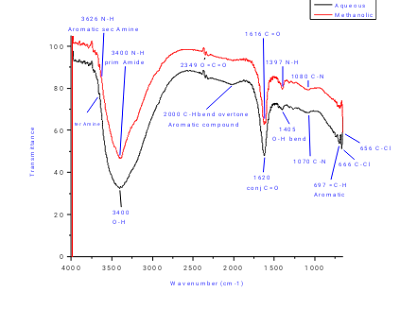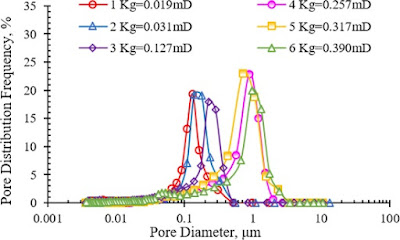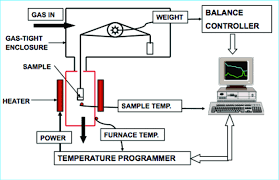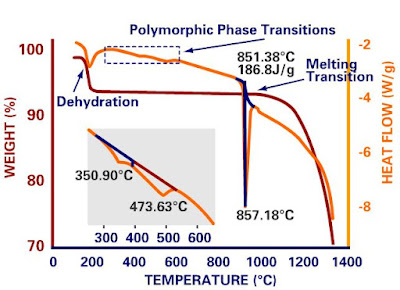Cultured meat is produced using tissue engineering techniques pioneered in regenerative medicine. Jason Matheny popularized the concept in the early 2000s after he co-authored a paper on cultured meat production and created New Harvest, the world's first nonprofit organization dedicated to in-vitro meat research.
Cultured meat has the potential to address the environmental impact of meat production, animal welfare, food security and human health, in addition to its potential mitigation of climate change.
In 2013, Mark Post created a hamburger patty made from tissue grown outside of an animal. Since then, other cultured meat prototypes have gained media attention: SuperMeat opened a farm-to-fork restaurant called "The Chicken" in Tel Aviv to test consumer reaction to its "Chicken" burger, while the "world's first commercial sale of cell-cultured meat" occurred in December 2020 at Singapore restaurant 1880, where cultured meat manufactured by US firm Eat Just was sold.
While most efforts focus on common meats such as pork, beef, and chicken which constitute the bulk of consumption in developed countries, companies such as Orbillion Bio focused on high end or unusual meats including elk, lamb, bison, and Wagyu beef. Avant Meats brought cultured grouper to market in 2021, while other companies have pursued different species of fish and other seafood.
The production process is constantly evolving, driven by companies and research institutions. The applications for cultured meat led to ethical, health, environmental, cultural, and economic discussions. Data published by the non-governmental organization Good Food Institute found that in 2021 cultivated meat companies attracted $140 million in Europe. Cultured meat is mass-produced in Israel. The first restaurant to serve cultured meat opened in Singapore in 2021.
Nomenclature
Besides cultured meat, the terms healthy meat, slaughter-free meat, in vitro meat, vat-grown meat, lab-grown meat,cell-based meat, clean meat, cultivated meat and synthetic meat have been used to describe the product. Artificial meat is occasionally used, although that specific term has multiple definitions.
Why was need felt for cultured meat
70 billion land animals, and possibly trillions of marine animals, are killed for human consumption each year. A majority of these animals are raised in factory farms, where they experience brutal forms of abuse in severely overcrowded and putrid conditions for the entirety of their short lives.
Major meat producers often defend factory farming as the most efficient way to meet the global demand for meat. But evidence shows that these facilities are disastrous for the environment, nearby communities, consumer health, and animal welfare.
It shouldn’t have to be this way. It's time to fix our broken food system. It's time to look for alternatives. Lab-grown meat could hold the key.
bs are only involved now, in order to support ongoing research and development. Once they begin to produce at scale, lab-grown meat companies will swap out laboratories for facilities that resemble microbreweries—a far cry from the industrial farms that profit off of the horrific exploitation, abuse, and slaughter of sentient .
Environmental effects
The scientific research is clear: factory farming is an environmental disaster. The industrial farming of animals is a major driver of climate change, deforestation, air and water pollution, and other planetary hazards.
Industrial livestock systems – particularly cattle farms – are responsible for the emission of huge quantities of greenhouse gases like CO₂ and methane. But growing meat from cells can have a similar – and sometimes even worse – environmental footprint.
How is lab grown meat made
Instead of killing animals for their meat, the process of making lab-grown meat starts with the careful removal of a small number of muscle cells from a living animal, typically using local anesthesia to provide relief from pain. The animal will experience a momentary twinge of discomfort, not unlike the feeling of getting a routine blood test at the doctor’s office. This process is much less harmful than the lifetime of pain and terror animals experience leading up to their horrific final moments at the slaughter house.
Lab grown meat has the exact same animal cells as what we traditionally consider “meat”—the flesh of an animal. The difference has to do with how it gets to your plate: lab-grown meat comes from cells harvested from a living animal, while conventional meat comes from an animal that’s raised and killed for human consumption.
Then, a lab technician places the harvested cells in bioreactors before adding them to a bath of nutrients. The cells grow and multiply, producing real muscle tissue, which scientists then shape into edible “scaffoldings.” Using these scaffoldings, they can transform lab-grown cells into steak, chicken nuggets, hamburger patties, or salmon sashimi. The final product is a real cut of meat, ready to be marinated, breaded, grilled, baked, or fried—no animal slaughter required.
First public trial
The first cultured beef burger patty was created by Mark Post at Maastricht University in 2013.[54] It was made from over 20,000 thin strands of muscle tissue, cost over $300,000 and needed 2 years to produce.
The burger was tested on live television in London on 5 August 2013. It was cooked by chef Richard McGeown of Couch's Great House Restaurant, Polperro, Cornwall, and tasted by critics Hanni Rützler, a food researcher from the Future Food Studio, and Josh Schonwald. Rützler stated, "There is really a bite to it, there is quite some flavour with the browning. I know there is no fat in it so I didn't really know how juicy it would be, but there is quite some intense taste; it's close to meat, it's not that juicy, but the consistency is perfect. This is meat to me... It's really something to bite on and I think the look is quite similar." Rützler added that even in a blind trial she would have taken the product for meat rather than a soya copy.
Lab grown meat effects
Some scientists and their research shows some concerns about Meat produced from cultured cells could be 25 times worse for the climate than regular beef unless scientists find ways to overhaul energy-intensive steps in its production.
Some researchers speculate that depending on the efficiency of the production process, the rise of the cultured meat industry could actually make climate change worse than traditional beef production. One issue is the longer lasting impact of carbon pollution versus methane gas pollution.
"Lab meat doesn't solve anything from an environmental perspective, since the energy emissions are so high," said Marco Springmann, a senior environmental researcher at the University of Oxford.
Some lab-grown meat contains an animal by-product known as fetal bovine serum (FBS). Slaughterhouses obtain fetal bovine serum by collecting blood from the unborn calves of pregnant cows after they’re killed. San Francisco-based lab-grown meat producer Eat Just uses a “very low level” of the serum in its chicken, which is the first lab-grown meat product to hit the market.
However, companies are quickly pivoting to find alternatives to FBS. In response to ethical concerns about using a slaughter house by product in the otherwise lab-grown meat, Dutch startup Mosa Meat revealed this year that it had successfully eliminated FBS from its process. Eat Just is also developing an animal-free alternative to fetal bovine serum.
Scientists are working for try to make lab grown meat more healthy which full fill nutritions requirements with in low cast.
History
The theoretical possibility of growing meat in an industrial setting has long been of interest. In a 1931 essay published by various periodicals and later included in his work Thoughts and Adventures, British statesman Winston Churchill wrote: "We shall escape the absurdity of growing a whole chicken to eat the breast or wing, by growing these parts separately under a suitable medium."
Initial research
In the 1950s, Dutch researcher Willem van Eelen independently came up with the idea for cultured meat. As a prisoner of war during the Second World War, Van Eelen suffered from starvation, leaving him passionate about food production and food security. He attended a university lecture discussing the prospects of preserved meat. The earlier discovery of cell lines provided the basis for the idea.
Vitro cultivation of first muscle fibers
In vitro cultivation of muscle fibers was first performed successfully in 1971 when pathologist Russel Ross cultured guinea-pig aorta.
Tissue engineering
In 1991, Jon F. Vein secured patent US 6835390 for the production of tissue-engineered meat for human consumption, wherein muscle and fat would be grown in an integrated fashion to create food products.
Cultured meat production
In 2001, dermatologist Wiete Westerhof along with van Eelen and businessperson Willem van Kooten announced that they had filed for a worldwide patent on a process to produce cultured meat.[43] The process employed a matrix of collagen seeded with muscle cells bathed in a nutritious solution and induced to divide.
That same year, NASA began conducting cultured meat experiments, with the intent of allowing astronauts to grow meat instead of transporting it. In partnership with Morris Benjaminson, they cultivated goldfish and turkey.
In 2003, Oron Catts and Ionat Zurr exhibited a few centimeters of "steak", grown from frog stem cells, which they cooked and ate. The goal was to start a conversation surrounding the ethics of cultured meat—"was it ever alive?", "was it ever killed?", "is it in any way disrespectful to an animal to throw it away?"
In the early 2000s, American public health student Jason Matheny traveled to India and visited a factory chicken farm. He was appalled by the implications of this system. Matheny later teamed up with three scientists involved in NASA's efforts. In 2004, Matheny founded New Harvest to encourage development by funding research. In 2005 the four published the first peer-reviewed literature on the subject.
In 2008, PETA offered a $1 million prize to the first company to bring cultured chicken meat to consumers by 2012. The contestant was required to complete two tasks to earn the prize:
- produce a cultured chicken meat product that was indistinguishable from real chicken and
- produce the product in large enough quantities to be competitively sold in at least 10 states.
The contest was later extended until 4 March 2014. The deadline eventually expired without a winner.
In 2008, the Dutch government invested $4 million into experiments regarding cultured meat. The In Vitro Meat Consortium, a group formed by international researchers, held the first international conference hosted by the Food Research Institute of Norway in April. Time magazine declared cultured meat production to be one of the 50 break through ideas of 2009. In November 2009, scientists from the Netherlands announced they had managed to grow meat using cells from a live pig.
First public trial
The first cultured beef burger patty was created by Mark Post at Maastricht University in 2013. It was made from over 20,000 thin strands of muscle tissue, cost over $300,000 and needed 2 years to produce.
Industrial development
Between 2011 and 2017, many cultured meat startups were launched. Memphis Meats (now Upside Foods[58]) launched a video in February 2016, showcasing its cultured beef meatball. In March 2017, it showcased chicken tenders and duck a l'orange, the first cultured poultry shown to the public.
An Israeli company, SuperMeat, ran a crowdfunding campaign in 2016, for its work on cultured chicken.
Finless Foods, a San Francisco-based company working on cultured fish, was founded in June 2016. In March 2017 it commenced laboratory operations.
In March 2018, Eat Just (in 2011 founded as Hampton Creek in San Francisco, later known as Just, Inc.) claimed to be able to offer a consumer product from cultured meat by the end of 2018. According to CEO Josh Tetrick the technology was already there. JUST had about 130 employees and a research department of 55 scientists, where cultured meat from poultry, pork and beef was researched. JUST has received investments from Chinese billionaire Li Ka-shing, Yahoo! co-founder Jerry Yang and according to Tetrick also by Heineken International and others.
On 27 April 2022, the European Commission approved the request for the collection of signatures for the European Citizens' Initiative End The Slaughter Age to shift subsidies from animal husbandry to cellular agriculture.
Market entry
European Union
In the European Union, novel foods such as cultured meat products have to go through a testing period of about 18 months during which a company must prove to the European Food Safety Authority (EFSA) that their product is safe. In March 2022, cultured meat producers had reached the level of attempting to gain regulatory approval from European Union supranational institutions coming just before mass goods could be sold to consumers. By February 2023, none had yet submitted a novel food dossier for approval by the EFSA. Legal experts explained this as having to do with the fact that, although the EFSA's novel food procedure has been well-established since 1997 (unlike in other jurisdictions, that still have or had to develop certain regulatory standards), it is a long and complicated process in which companies can have little imput once they have submitted their request, unlike cultured meat startups in the United States (who could easily communicate back and forth with the FDA to clarify any issues), and in the UK, Singapore and Israel (where governments have implemented a 'single point of contact' responsible for the overall process).
Israel
In November 2020, SuperMeat opened a 'test restaurant' in Ness Ziona, Israel, right next to its pilot plant; journalists, experts and a small number of consumers could book an appointment to taste the novel food there, while looking through a glass window into the production facility on the other side. The restaurant was not yet fully open to the public, because as of June 2021 SuperMeat still needed to wait for regulatory approval to start mass production for public consumption, and because the COVID-19 pandemic restricted restaurant operations. By February 2023, Israeli authorities had established a regulatory structure similar to that of Singapore, and shown a general willingness to work towards approval (as well as financing research for cultivated food innovation), but were still in the process of developing safety regulations in consultations with researchers and other experts. For example, the Israeli Health Ministry and UN Food and Agriculture Organization (FAO) co-organised a convention of cultivated food safety regulation experts in September 2022.
Singapore
On 2 December 2020, the Singapore Food Agency approved the "chicken bites" produced by Eat Just for commercial sale. It marked the first time that a cultured meat product passed the safety review (which took 2 years) of a food regulator, and was widely regarded as a milestone for the industry. The chicken bits were scheduled for introduction in Singaporean restaurants. Restaurant "1880" became the first to serve cultured meat to customers on Saturday 19 December 2020. In January 2023, the SFA also granted regulatory approval for the production of cultured meat with serum-free media to Eat Just' subsidiary GOOD Meat, which had introduced its clean chicken product in several more Singaporese restaurants as well as hawker centres and food delivery services since 2020, and was constructing the bioreactors for its new facility in Singapore. This world-first approval was said to be a milestone in making cultivated meat production more scalable and efficient.
United States
In May 2022, Finless Foods launched pokè-style plant-based tuna product at National Restaurant Association's Show, with availability at restaurants and foodservice operators across the United States. In November 2022, the Food and Drug Administration (FDA) completed the pre-market consultation of Upside Foods (formerly Memphis Meats), concluding that its products were safe to eat, a first for cultivated meat companies in the United States.[99] Only the United States Department of Agriculture (USDA) still had to finalise the labelling and inspection process; as of April 2023, this last hurdle to U.S. market entry was expected to be overcome somewhere in 2023.









.jpeg)









.jpg)
.jpeg)
.jpeg)
.jpeg)
.jpeg)
.jpeg)
-01.jpeg)
.jpeg)

-01.jpeg)
.jpeg)